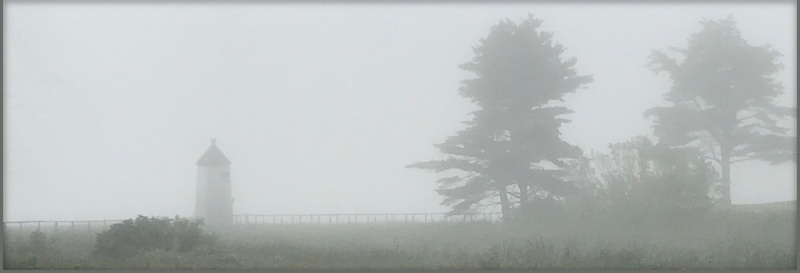When
I was growing up at the mouth of the Kennebec, I could lie in my bed on still
foggy mornings and count five fog signals ... the great diaphone at Seguin,
of course, and then the bells at Pond Island Light, and the Fort Popham Light,
at Perkins Island and, if there was a touch of north wind, Squirrel Point Light.
It is a singularly sweet memory.

Fiddling in the Fog
Notes on Navigating Fiddler's Reach
by
Fred Kahrl
-
Any commercial
vessel transiting the Kennebec River would avail themselves
of a river pilot if the ship's captain was not himself a qualified "river"
pilot. This is required by both the Coast Guard and the vessel's underwriters.
Any such pilot would be so familiar with the "river" that the
bell at Fiddler's Reach AND the bell at Doubling Point Light would be of
great help in guiding vessels through the fog (daytime) or snowstorm, making
the turns through the Reach. i.e. - they could use the vectors of the sounds.
-
Small boats
(under 100 feet) have the advantage of going slow, steering from an open
cockpit or opening wheelhouse windows, and "feeling" their way
through the fog or snow. The Reach looks small on the chart, but actually
has lots of room to maneuver for most small to medium size vessels.
-
Most large
vessels chose to transit the "river" against the tide ... allowing
them to progress slowly but still have good steerage. Today, few large vessels
(think Bath Iron Works) ever transit the river in the fog ... radar, etc.
notwithstanding. BIW ships on sea trials ... i.e. - under scheduling pressure
... have been known to anchor at Bluff Head and in Atkins Bay to wait
(usually overnight) for the fog to clear.
-
So,
what's the big deal about fog bells. Well, they were most valuable
for passenger vessels which ran on schedule, rather than having the luxury
of waiting for a favorable tide or improved visibility. So, the captain's
of these big sidewheelers (and early steam/propellor packets) needed every
navigation aid that could be reasonably provided since they often transited
the "river" with the tide behind them, in fog and snow,
and even at night in
fog and snow. The addition of the Fiddler's Reach bell not only gave a useful
sound warning of the shore where it sat, but also of the reef that jutted
out from the shore underwater right at that point.
-
Although
the bells all had slightly different tones, it was the spacing of
the rings that actually identified the bells one from another. Of course,
today the near universal use of radar, recently augmented with GPS, has
greatly reduced the need for fog signals. Those still in operation primarily
aid small boats that can actually stop and listen every so often to figure
out where they are.
Fred Kahrl is a former Coast Guard lighthouse keeper at Seguin Island Light
who lives in Woolwich, Maine
|

